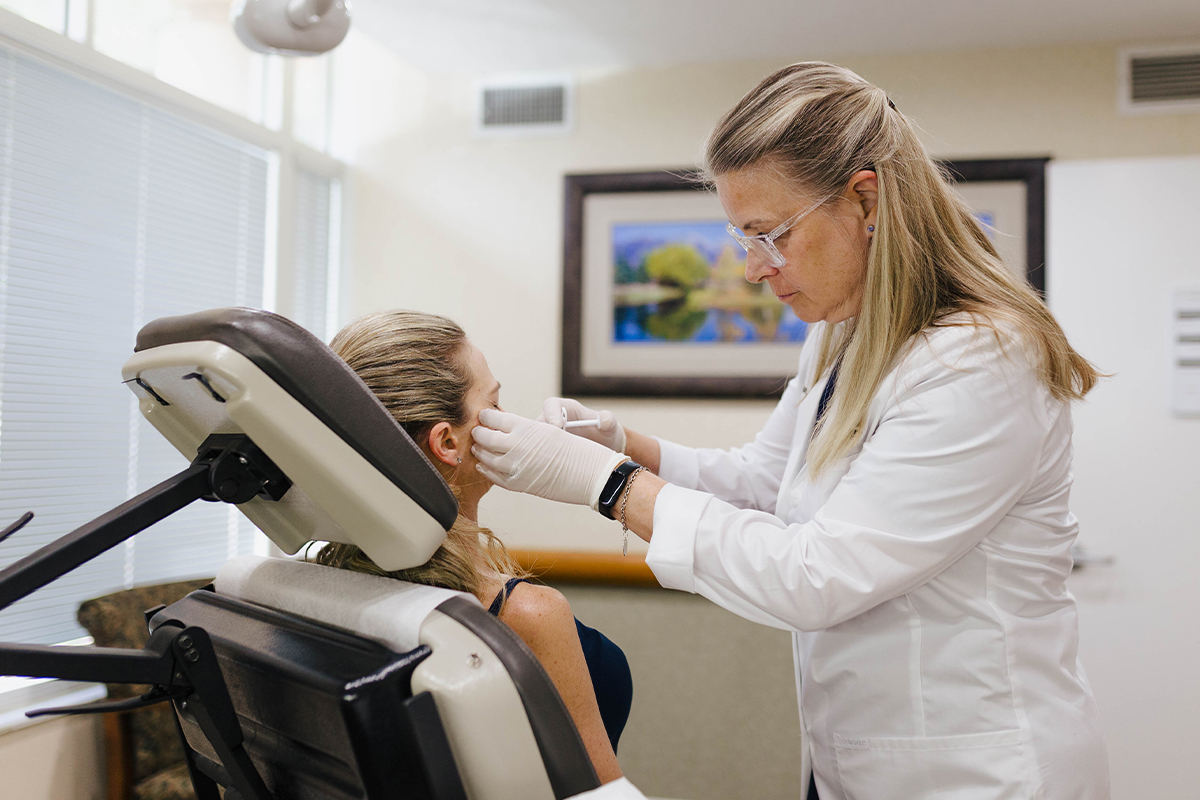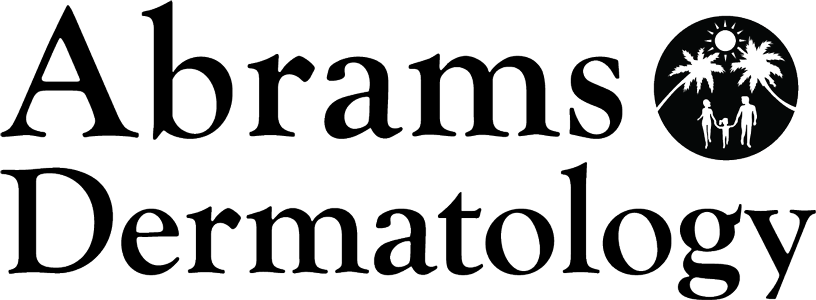Enhance facial contours and restore youthful volume with Restylane® at Abrams Dermatology. This versatile dermal filler effectively treats fine lines, wrinkles, and nasolabial folds and can add fullness to the lips and cheeks. Restylane in Sarasota helps you achieve smoother, more natural-looking skin for a refreshed and rejuvenated appearance.
Smooth Away Wrinkles and
Restore Facial Volume
Restylane is a hyaluronic acid-based dermal filler formulated to smooth wrinkles, add volume, and enhance facial features. Hyaluronic acid, a substance naturally found in the skin, helps to hydrate and plump the treated areas. Restylane is commonly used to reduce the appearance of fine lines, nasolabial folds, and marionette lines and to add fullness to lips and cheeks. Its non-surgical application makes it convenient for those seeking a more youthful, refreshed look without downtime.
In addition to Restylane, we offer a curated selection of advanced cosmetic fillers designed to address a wide range of aesthetic concerns, from fine lines and volume loss to facial contouring. To explore the full spectrum of injectable options available at our practice, please visit our cosmetic fillers page.

Restylane Is the Ideal Treatment For:
- Fine lines and wrinkles
- Nasolabial folds (smile lines)
- Marionette lines (lines around the mouth)
- Thin or uneven lips
- Volume loss in cheeks and under-eye areas
- Facial contour irregularities
- Hollow temples
- Acne scars and other minor facial depressions
- Sagging skin around the jawline
- Aging hands with volume loss and visible veins
How Does Restylane Work?
Restylane works by using hyaluronic acid (HA), a naturally occurring substance in the skin that retains moisture and adds volume. Restylane’s HA molecules bind to water molecules when injected into the skin, creating a plumping effect that smooths out wrinkles and fills areas with volume loss.
The gel-like consistency integrates smoothly into the skin, enhancing contours and providing natural-looking results. Over time, the body gradually breaks down and absorbs the HA, so the results are temporary.
The Unique Benefits of Restylane:
- Non-surgical, minimally invasive treatment
- Immediate, natural-looking results
- Contains hyaluronic acid, which hydrates and plumps the skin
- Customizable to target specific areas and concerns
- Results can last 6-18 months, depending on the treatment area
- Safe, with little to no downtime and minimal side effects
- Reversible, allowing for adjustments if needed
- Versatile and suitable for various facial areas and concerns
Book your personalized consultation for Restylane in Sarasota today.

We Offer the Following Restylane Fillers in Sarasota
Restylane Refyne
Restylane Refyne treats moderate to severe facial wrinkles and folds, like nasolabial folds and marionette lines. Its unique XpresHAn Technology™ allows for natural movement, so you can maintain your natural expressions while enjoying smoother skin. It is ideal for those seeking subtle, flexible results that enhance facial features without a “frozen” appearance.
Restylane Defyne
Restylane Defyne offers a firmer gel structure, making it perfect for deeper lines and wrinkles around the nose and mouth. It uses the same XpresHAn Technology™ as Restylane Refyne, allowing for dramatic results while supporting natural facial expressions. It’s ideal for those looking to address deeper folds without compromising their natural look.
Restylane Kysse
Restylane Kysse is formulated specifically for lip enhancement and perioral wrinkle correction. It adds natural-looking volume, softness, and color while also allowing for flexible movement. This makes it an excellent choice for enhancing lips with smooth, subtle volume that feels soft and maintains expressiveness, offering results that last up to a year.
Restylane Lyft
Restylane Lyft is formulated to lift and add volume to the cheeks, as well as treat midface contour deficiencies. Its thicker, robust formula is ideal for creating more pronounced and lasting volume, making it effective not only for the face but also for restoring fullness to the backs of the hands, providing a rejuvenated appearance.
Restylane Eyelight
Restylane Eyelight is formulated for the delicate under-eye area to address dark circles, hollows, and under-eye bags. Its smooth, lightweight gel formula integrates seamlessly with the skin, providing natural-looking brightness and volume under the eyes. It offers a subtle enhancement to help you look refreshed and more awake.
Restylane Contour
Restylane Contour is specifically formulated for cheek augmentation, helping to sculpt and define the midface area. Its flexible and smooth formulation allows for precise contouring, resulting in a natural-looking volume and shape that enhances the cheekbones without appearing rigid or artificial.
Restylane L
Restylane L is the original hyaluronic acid filler in the Restylane line, versatile enough to treat a wide range of facial wrinkles and lines. It includes lidocaine for a more comfortable injection experience, making it suitable for patients seeking to address multiple areas, including nasolabial folds, lips, and other moderate wrinkles.
Restylane FAQs
What Happens During a Restylane Treatment?
During a Restylane treatment in Sarasota, a licensed aesthetic provider will cleanse the treatment area and may apply a topical numbing cream to enhance your comfort. The filler is then injected into specific areas using a fine needle. The process usually takes about 30-45 minutes, depending on the treatment area and the extent of enhancement you desire.
Are There Any Side Effects?
Common side effects are mild and typically include redness, swelling, bruising, or tenderness at the injection site. These effects are temporary and generally resolve within a few days. More serious side effects are rare but can include infection or allergic reactions. Your provider will discuss potential risks with you during your consultation.
Is There Any Downtime After the Restylane Treatment?
Restylane treatments involve little to no downtime. You can return to your daily activities immediately, but it’s advisable to avoid strenuous exercise, alcohol, and sun exposure for 24-48 hours to minimize swelling and bruising. Applying ice packs can help reduce any swelling.
When Will I See the Results, and How Long Do They Last?
You will see immediate improvements in volume and smoothness after your Restylane treatment. However, optimal results typically appear within one to two weeks as the filler settles. Depending on the specific product used and the treatment area, results can last anywhere from 6 to 18 months. Touch-ups may be scheduled to maintain your desired look.

Schedule Your Consultation
Abrams Dermatology is dedicated to helping you achieve a more youthful, contoured appearance with Restylane in Sarasota. This versatile dermal filler enhances facial contours, smooths wrinkles, and restores lost volume, delivering natural-looking results that rejuvenate your features. Whether you want to define your cheeks, plump your lips, or reduce fine lines, Restylane can provide the subtle, flexible enhancement you seek. Schedule a consultation today to discover how Restylane can help elevate your facial contours.